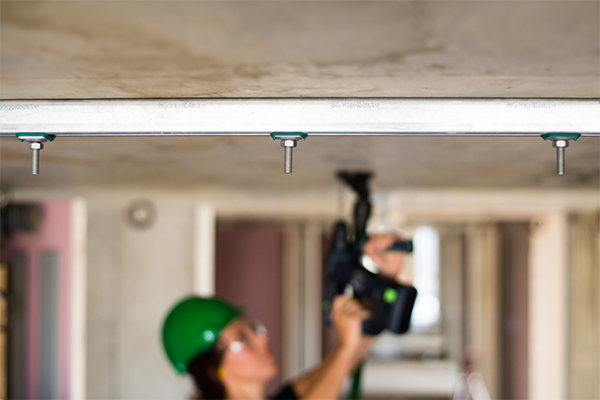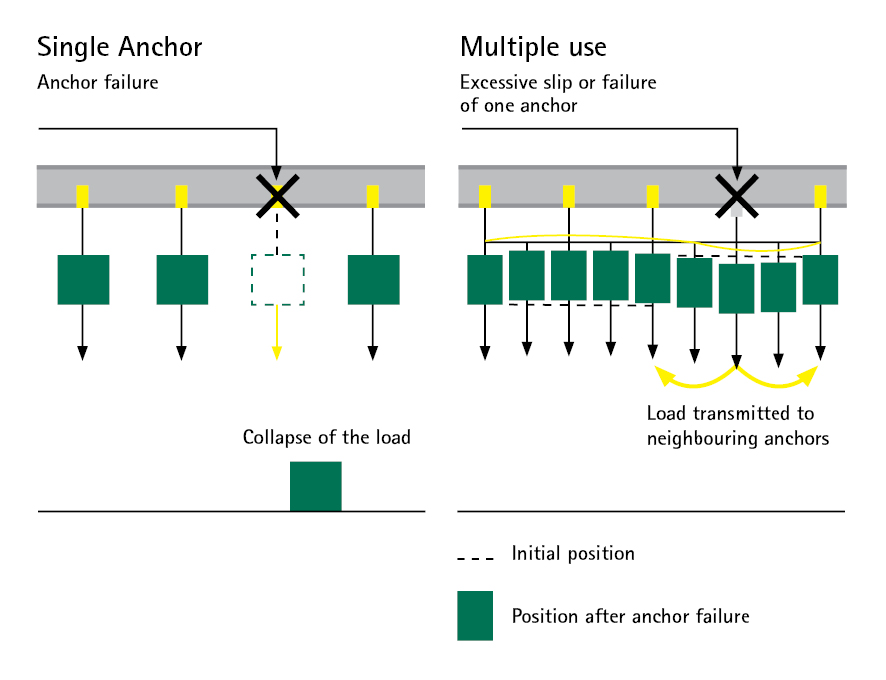 Have you ever encountered phrases such as multiple use or multiple fixing in the anchoring context and were not sure what they meant? In this article, we will take a closer look at what these terms typically refer to.
Have you ever encountered phrases such as multiple use or multiple fixing in the anchoring context and were not sure what they meant? In this article, we will take a closer look at what these terms typically refer to.
In Europe, most anchors subject to static and quasi-static loads are designed in accordance with “ETAG 001 Annex C: Design Methods for Anchorages”, a publication by the European Organisation for Technical Approvals. Commonly known as “Annex C”, it provides a framework for the design of anchorages in concrete and outlines three anchor design methods, namely methods A, B and C.
These design methods have something in common: they all require the anchor design to prove that the value of the design actions does not exceed the value of design resistance (Sd < Rd). Furthermore, whether a fixture is anchored with a single anchor or with a group of anchors, correct functioning of each individual anchor is critical to the overall integrity of the fixture.
“ETAG 001 Part 6: Anchors for multiple use for non-structural applications”, another publication by EOTA, introduces the term multiple use, which brings additional requirements for the design of a fixture. It states the following: “the design of the fixture is such that, in the case of excessive slip or failure of one anchor, the load can be transmitted to neighbouring anchors without significantly violating the requirements on the fixture in the serviceability and ultimate limit state.” It means that each fixture must have at least one fixing point, which in turn must have a group of anchors, e.g. at least 3 or 4 anchors. If one of the anchors in the fixing point fails, the remaining anchors must be able to compensate for the failed anchor and sustain the fixture in place. Such applications are therefore considered multiple use or multiple fixing applications.
The below infographic provides a simplified overview of the two anchor design approaches.

Products that have a European Technical Assessment issued on the basis of ETAG 001 Part 6 are to be used only for multiple use for non structural applications. Typical multiple use applications include anchoring of pipelines, cable trays, or suspended rail systems.
The complete definition of multiple use according to the Member States is given in Annex 1 of ETAG 001 Part 6. In the absence of a definition by a Member State, the following default values may be taken:
| Minimum number of fixing points | Minimum number of anchors per fixing point | Maximum design value of actions per fixing point |
| [n1] | [n2] | [n3] |
| 3 | 1 | 2.0 kN |
| 4 | 1 | 3.0 kN |
The maximum design value of actions per fixing point might be increased if it is shown in the anchor design that the requirements on the strength and stiffness of the fixture in the serviceability and ultimate states after the failure of one anchor are fulfilled.
References:
Would you like to find out more about our Heavy Duty Anchors?